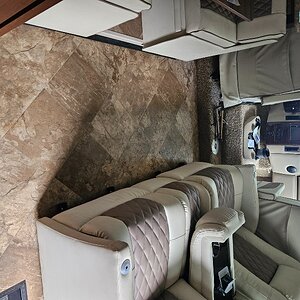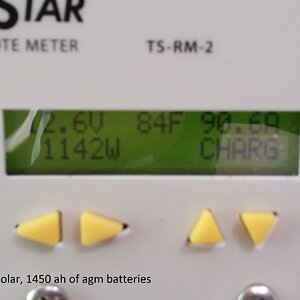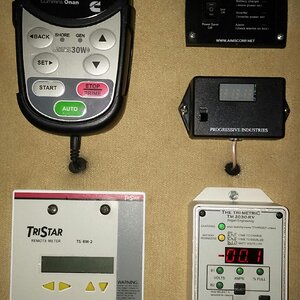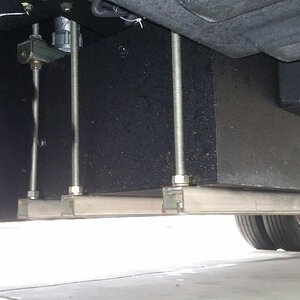Random thoughts:
Boondocking often means you will be backing or driving the rig off-road, where there are low brush, tall grasses, sticks, and other things that grab your undercarriage. While still in your driveway, crawl underneath the rig with a large fistful of zip ties. There are wires and flexible tubing that can catch on the vegetation. Zip all those loose hangies up tight. The factory never secures the loose dangly stuff underneath very well.
Boondocking means no hookups. Most people find the gray tank fills first, but YMMV. Dumping the tanks is a problem. You can use a blue tote to partially empty the tanks, then take it with you on your daily excursions in your towing vehicle. Or break camp and drive to a dump station. Some people dump their gray on the ground. I don't. Dumping the black on the ground, or even in a hole you dug, is a mortal sin in the boondocking world. Just don't.
Use paper plates to save on dishwashing. Learn to shower very efficiently, take the Navy shower method to the extreme. When you are out-and-about driving around during the day, stop at a public restroom before heading back to camp. Carry a 5 gal water jug with you while exploring around. Stop at a good water source and fill it up before heading back to camp. Dump the 5 gal into your fresh tank. This will stretch your fresh water supply. A problem is trash. When the trash bags fill you have no no good place to store it. Leaving it outside will invite critters to scatter it. Putting it inside your car or truck makes the interior stinky.
Propane refrigerators get cranky at high altitude. Mine works at ~8500 but wouldn't at 10,000 at Cedar Breaks in Utah.
Federal lands have a time limit on how long to stay boondocking (they call it Dispersed Camping). Usually 14 days. The time limit may or may not be rigorously enforced, depending on how popular that area is, and whether you keep a clean neat camp. When you move to new spot, dump your waste tanks at the first opportunity.
Sometimes Ranger Stations have dump sites for their own use in the back lot. Ask really nice at the front desk and they may let you use it. Or point you to a public dump station nearby.
There may be campfire restrictions on public lands during fire season. A campfire permit may be required.
If boondocking in California, you can get a free fire permit on line good for all public lands state and federal.

www.readyforwildfire.org
Watch a short video and answer some really basic questions. The permit is generated on screen and print it out.
The crime risk while boondocking is really low. We have never had any problem leaving our rig while we were gone all day. One time we came back to strange footprints around our camp, but nothing was missing or disturbed. Our favorite boondocking haunts are pretty remote, though. Common to not see another person for a week. We have had 4 legged pests. I have heard of bears coming to investigate the residual cooking smells from your outdoor grill, I have not had that problem. However, raccoons and rodents do come.
One of the great things about boondocking is the night sky -- no light pollution at all if you are out in the remote sections of the western US. Get the Google Sky phone app or similar. You can see uncountable billions of stars. In any developed campground there is always some light pollution from other campers. Not so while boondocking.
After finding your remote boondocking site and setting up camp, make a GPS waypoint on your phone mapping app or GPS unit. You may have trouble finding that spot again.
Look at the tree cover around your site. Figure where the shade will be in the afternoon and park accordingly. If winter camping, you may want afternoon sun to keep the rig warmer. Or afternoon shade in summer.














